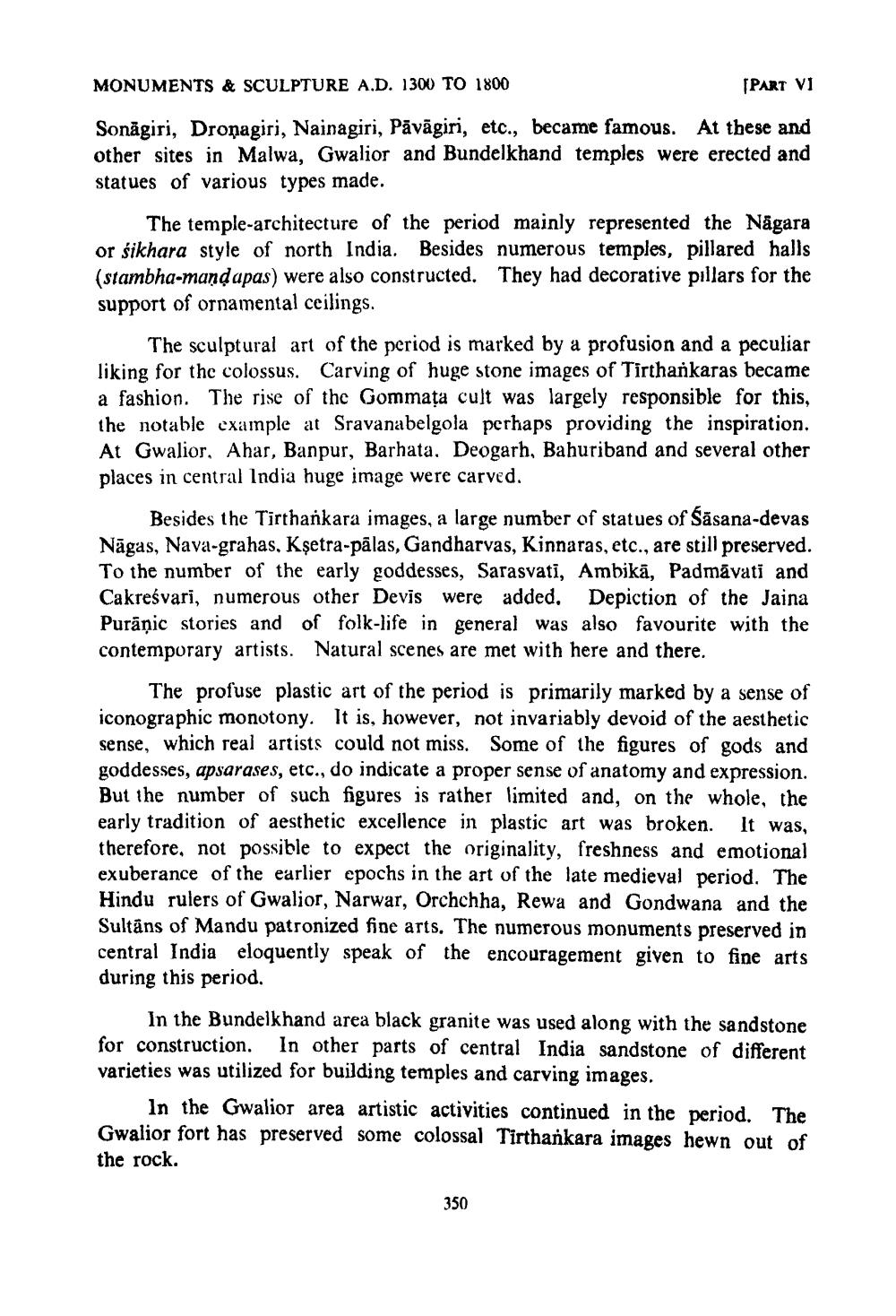________________
MONUMENTS & SCULPTURE A.D. 1300 TO 1800
(PART VI
Sonagiri, Dropagiri, Nainagiri, Pāvāgiri, etc., became famous. At these and other sites in Malwa, Gwalior and Bundelkhand temples were erected and statues of various types made.
The temple-architecture of the period mainly represented the Någara or śikhara style of north India. Besides numerous temples, pillared halls (stambha-mand apas) were also constructed. They had decorative pillars for the support of ornamental ceilings.
The sculptural art of the period is marked by a profusion and a peculiar liking for the colossus. Carving of huge stone images of Tirtharkaras became a fashion. The rise of the Gommața cult was largely responsible for this, the notable example at Sravanabelgola perhaps providing the inspiration. At Gwalior, Ahar, Banpur, Barhata. Deogarh, Bahuriband and several other places in central India huge image were carved.
Besides the Tirthankara images, a large number of statues of Sāsana-devas Nāgas, Nava-grahas, kşetra-pālas, Gandharvas, Kinnaras, etc., are still preserved. To the number of the early goddesses, Sarasvati, Ambikā, Padmāvati and Cakreśvari, numerous other Devis were added. Depiction of the Jaina Purāņic stories and of folk-life in general was also favourite with the contemporary artists. Natural scenes are met with here and there.
The profuse plastic art of the period is primarily marked by a sense of iconographic monotony. It is, however, not invariably devoid of the aesthetic sense, which real artists could not miss. Some of the figures of gods and goddesses, apsarases, etc., do indicate a proper sense of anatomy and expression. But the number of such figures is rather limited and, on the whole, the early tradition of aesthetic excellence in plastic art was broken. It was, therefore, not possible to expect the originality, freshness and emotional exuberance of the earlier epochs in the art of the late medieval period. The Hindu rulers of Gwalior, Narwar, Orchchha, Rewa and Gondwana and the Sultans of Mandu patronized fine arts. The numerous monuments preserved in central India eloquently speak of the encouragement given to fine arts during this period.
In the Bundelkhand area black granite was used along with the sandstone for construction. In other parts of central India sandstone of different varieties was utilized for building temples and carving images.
In the Gwalior area artistic activities continued in the period. The Gwalior fort has preserved some colossal Tirthankara images hewn out of the rock.
350




